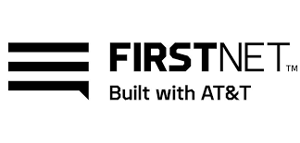FirstNet stands for First Responder Network Authority. Its mission is to "deploy, operate, maintain, and improve the first high-speed, nationwide wireless broadband network dedicated to public safety."

This LMR to LTE update has a projected release date of the first of the year 2020 and will be available to public safety officials. FirstNet is available if your state "opts-in" meaning it must be approved by the governor of your state and then public safety officials can subscribe to the service.
FirstNet was first established by Congress in February of 2012 and is addressing a recommendation given by the 9/11 commission to improve first responder's communication. FirstNet will allow them to strengthen communication, improve response times and be more efficient in disasters.
I recently had the opportunity to listen to Stephen Devine, the director of FirstNet Built with AT&T, talk about the LMR to LTE update at APCO 2019 in Baltimore, Maryland.
During his speech, Devine touched on topics including features and benefits of the transition, provided information on the variety of ways you can establish the LTE PTT and new products that make it easier to transition.
To begin, I want to talk about the features and benefits of updating to an LTE service that Devine mentioned.
Features of LTE
-
Expansion of reach
-
Cross organizational PTT
-
Availability of a fallback network
-
Simple device needed
-
Leverage the latest technology
-
Security- AES 256 bit encryption and FIBS 140-2 compliant
Benefits of LTE
-
Reduces need for channel and equipment upgrades by offloading traffic and freeing capacity
-
Inter-group calling
-
Instant personal alert feature
-
Industry standards-based (IP) connectivity to enhanced PTT
-
Interoperability support for LMR standards
AT&T Enhanced Push-to-Talk (EPTT)
AT&T has created a more enhanced and advanced push to talk system for land mobile radios and LTE. This enhanced PTT includes situational awareness, emergency calls, and interoperability with two-way radios using P25, ISSI, CSSi or Radio Over IP. This extends the power of your LMR (Land Mobile Radio).
Enhanced push-to-talk has emergency calling and monitoring which is perfect for first responders and business-critical communication. Corporate administration tools (CAT) allow you to remotely communicate with contacts or talkgroups and designate roles from anywhere in the country. For instance, you can add a supervisor's contacts into a talk group for efficient communication. You can also make changes in real-time to users in the field. This corporate administration tool is a free service.
Integrated dispatch allows you to manage the day to day operations, locate other users in the field, send and receive calls, and send files and messages securely all from a web-browser solution. Enhanced PTT connects with an LMR system and extends coverage throughout the nation. Lastly, the PTT can be used with or without Wifi so no need to worry when you can't access the internet.
Enhanced push-to-talk gives users superior experience, devices, and accessories that fit every situation, extensive coverage, LMR to LTE interoperability, advanced features, and integrated solutions and lastly, administrative tools and operational support all year round.
NPSTC: National Public Safety Telecommunications Council
NPSTC or National Public Safety Telecommunications Council works on creating the design needs for the network of FirstNet. This council needs to make sure this network they are creating is able to withstand natural disasters and man-made disasters. If the infrastructure of the network is not stable enough to withstand these disasters, police, fire, and EMS are left without the necessary communication needed to keep the public safe. That is why it's important for NPSTC to have all the necessary guidelines in place to avoid such events from occurring.
According to NPSTC, they help public safety by developing and making recommendations regarding public safety communication issues and monitors new technology research to stay on top of user's needs.
The transformation from LMR to LTE with FirstNet is coming in the near future to provide a more efficient way to communicate during a national disaster or critical event. Public safety officials will have the opportunity to communicate with others inside and outside of their agency. Devine mentioned, "Implement, in a cost-effective manner, additional PTT capabilities to allow for secure communications between agency leadership during critical events." Last, the ability to change in real-time user's preferences and talk via talk groups in any field at the push of a button ensures communication where ever anyone may be.

![FirstNet: LMR to LTE Update [Speaker Series]](http://www.wvbandcoms.com/cdn/shop/articles/FirstNet.jpg?v=1640723043&width=1366)

